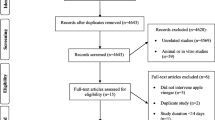Summary
The effect of co-administration of low doses of pravastatin to hypercholesterolaemic patients already receiving long-term probucol treatment (mean 500–1,000 mg/day for 350 days) were investigated. Pravastatin 5 mg/day (Group 1; 12m, 13f; mean age 59.1 y) or 10 mg/day (Group 2; 8m, 11f; mean age 60.8 y) was administered, and blood was taken after 0, 3, 6, and 12 months.
Both groups showed a significant reduction in serum total cholesterol (TC), phospholipid (PL), low density lipoprotein-cholesterol (LDL-C), LDL-triglyceride (TG), LDL-PL, apolipoprotein (apo) B, and apo E after the combined therapy. These levels were reduced more in Group 2 than in Group 1 subjects. In Group 2, significant falls in serum TG and apo CII were also observed. The changes in TC, PL, LDL-C, apo B, apo CII and apo E were dependent upon the dose of pravastatin, as assessed by two-way analysis of variance. Serum high density lipoprotein (HDL)3-C, apo AI and apo AII were slightly but significantly increased in both groups after 12 months of combined therapy, but the increase was not sufficient to reverse the probucol-induced lowering of the HDL level. We conclude that combined therapy resulted in a significant reduction in atherogenic lipoproteins and apolipoproteins, and an increasing dose of pravastatin (5 mg to 10 mg daily) made the lipid lowering effect more prominent. The reduction in serum HDL-C due to long-term probucol administration was not reversed by the addition of pravastatin.
Similar content being viewed by others
References
Davignon J (1986) Medical management of hyperlipidemia and the role of probucol. Am J Cardiol 57:22H-28H
Witztum JL, Simmons D, Steinberg D, Beltz WF, Weinreb R, Young SG, Lester P, Kelly N, Juliano J (1989) Intensive combination drug therapy of familial hypercholesterolemia with lovastatin, probucol, and colestipol hydrochloride. Circulation 79: 16–28
Illingworth DR, Bacon S (1989) Treatment of heterozygous familial hypercholesterolemia with lipid-lowering drugs. Arteriosclerosis 9:121–134
Carew TE, Schwenke GC, Steinberg D (1987) Antiatherogenic effect of probucol unrelated to its hypercholesterolemic effect: evidence that antioxidants in vivo selectively inhibit low density lipopotein degradation in macrophage-rich fatty streaks and slow the progression of atherosclerosis in Watanabe heritable hyperlipidemic rabbit. Proc Nat Acad Sci USA 84:7725–7729
Kita T, Nagano Y, Yokode M, Ishii K, Kume N, Ooshima A, Yoshida H, Kawai C (1987) Probucol prevents the progression of atherosclerosis in Watanabe heritable hyperlipidemic rabbits, an animal model of familial hypercholesterolemia. Proc Nat Acad Sci USA 84:5928–5931
Endo A, Kuroda M, Tanzawa K (1976) Competitive inhibition of 3-hydroxy-3-methylglutaryl coenzyme A reductase by ML-236A and ML-236B, fungal metabolites, having hypocholesterolemic activity. FEBS Lett 72:323–326
Endo A, Tsujita Y, Kuroda M, Tanzawa K (1977) Inhibition of cholesterol synthesis in vitro and in vivo by ML-236A and ML-236B, competitive inhibitors of 3-hydroxy-3-methylglutaryl coenzyme A reductase. Eur J Biochem 77:31–36
Franceschini G, Sirtori M, Vaccarino V, Gianfranceschi G, Rezzonico L, Chiesa G, Sirtori CR (1989) Mechanisms of HDL reduction after probucol changes in HDL subfractions and increased reverse cholesteryl ester transfer. Arteriosclerosis 9: 462–469
Yamamoto A, Matsuzawa Y, Yokoyama S, Funahashi I, Yamamura T, Kishino B (1986) Effects of probucol on xanthomata regression in familial hypercholesterolemia. Am J Cardiol 57: 29H-35H
Havel RJ, Eder HA, Bragdon JH (1955) The distribution and chemical composition of ultracentrifugally separated lipoproteins in human serum. J Clin Invest 34: 1345–1353
Allain CC, Poon LS, Chan CS, Richmond W, Fu PC (1974) Enzymatic determination of total serum cholesterol. Clin Chem 20: 470–475
Eggstein M, Kreutz FH (1966) Eine neue Bestimmung der Neutralfette in Blutserum und Gewebe. I. Mit Prinzip, Durchführung und Besprechung der Methode. Klin Wochenschr 44:262
Noma A, Nezu-Nakayama K, Kita M, Okabe H (1978) Simultaneous determination of serum cholesterol in high- and low-density lipoproteins with use of heparin Ca2+, and an anion-exchange resin. Clin Chem 24:1504–1508
Ikeda T, Shibuya Y, Senba U, Sugiuchi H, Araki S, Uji Y, Okabe H (1991) Automated immunoturbidimetric analysis of six plasma apolipoproteins: correlation with radial immunodiffusion assays. J Clin Lab Ana 5:90–95
Ishitoya Y, Sato K (1979) Clinical significance of lecithin acyltransferase in plasma. Jap J Clin Pathol 26:1050–1054
Abe A, Noma A (1988) Enzyme-linked immunosorbent assay of lipoprotein (a) in serum and cord blood. Clin Chim Acta 177: 31–40
Saku K, Sasaki J, Arakawa K (1987) Long-term effect of CS-514 (HMG-CoA reductase inhibitor) on serum lipids, lipoproteins, and apolipoproteins in patients with hypercholesterolemia. Curr Therapeu Res 42:491–500
Nestel PJ, Billington T (1981) Effects of probucol on low density lipoprotein removal and high density lipoprotein synthesis. Atherosclerosis 38:203–209
Atmeh RF, Stewart JM, Boag DE, Packard CJ, Lorimer AR, Shepherd J (1983) The hypolipidemic action of probucol: a study of its effect on high and low density lipoproteins. J Lipid Res 24: 588–595
Ying H, Saku K, Harada R, Takami N, Sasaki N, Saito Y, Arakawa K (1990) Putative mechanisms of action of probucol on high-density lipoprotein apolipoprotein A-I and its isoprotein kinetics in rabbits. Biochimi Biophys Acta 1047:247–254
Monge JC, Hoeg JM, Law SW, Brewer HB Jr (1989) Effect of low density lipoproteins, high density lipoproteins and cholesterol on apolipoprotein A-I mRNA in Hep G2 cells. FEBS Lett 243: 213–217
Dahlen GH, Guyton JR, Attar M, Farmer JA, Kautz JA, Gotto AM Jr (1986) Association of levels of lipoprotein Lp(a), plasma lipids, and other lipoproteins with coronary artery disease documented by angiography. Circulation 74:758–765
MBewu AD, Durrington PN (1990) Lipoprotein (a): structure, properties and possible involvement in thrombogenesis and atherogenesis. Atherosclerosis 85:1–14
Maeda S, Okuno M, Abe A, Noma A (1989) Lack of effect of probucol on serum lipoprotein (a) levels. Atherosclerosis 79: 267–269
Thiery J, Armstrong VW, Schlaef J, Creutzfeldt C, Creutzfeld W, Seidel D (1988) Serum lipoprotein Lp[a] concentrations are not influenced by an HMG-CoA reductase inhibitor. Klin Wochenschr 66:462–463
Author information
Authors and Affiliations
Rights and permissions
About this article
Cite this article
Saku, K., Zhang, B., Hirata, K. et al. Combined therapy with probucol and pravastatin in hypercholesterolaemia. Eur J Clin Pharmacol 44, 535–539 (1993). https://doi.org/10.1007/BF02440854
Received:
Accepted:
Issue Date:
DOI: https://doi.org/10.1007/BF02440854




